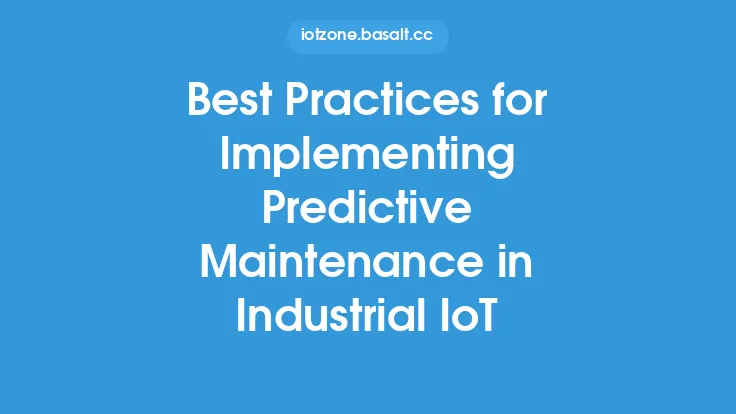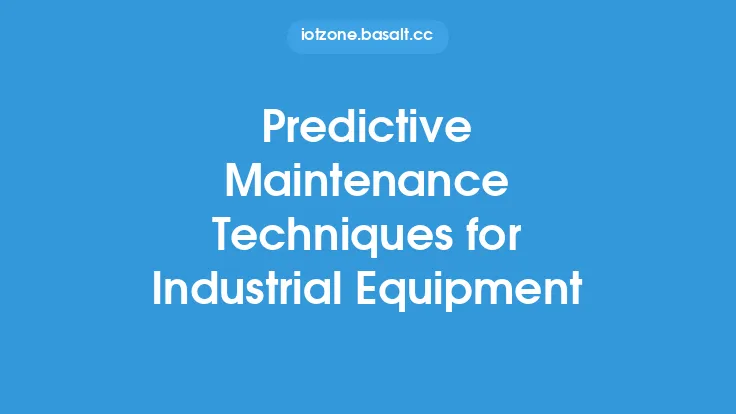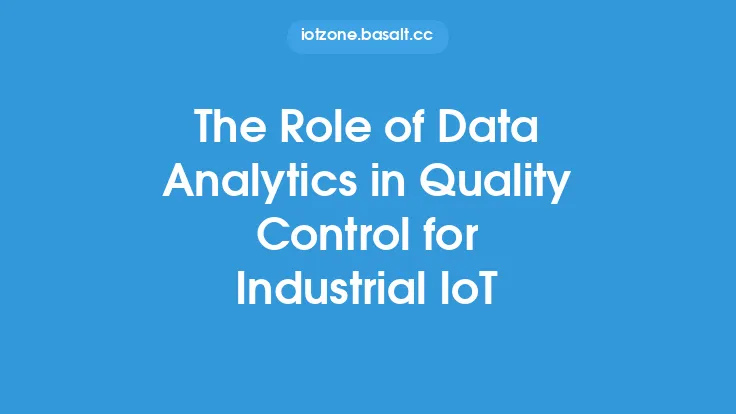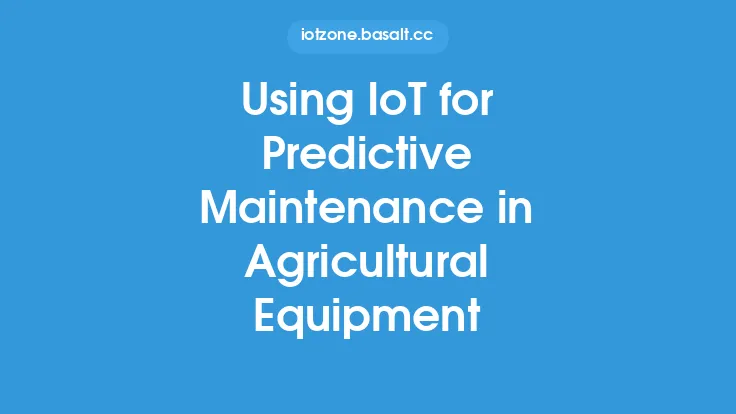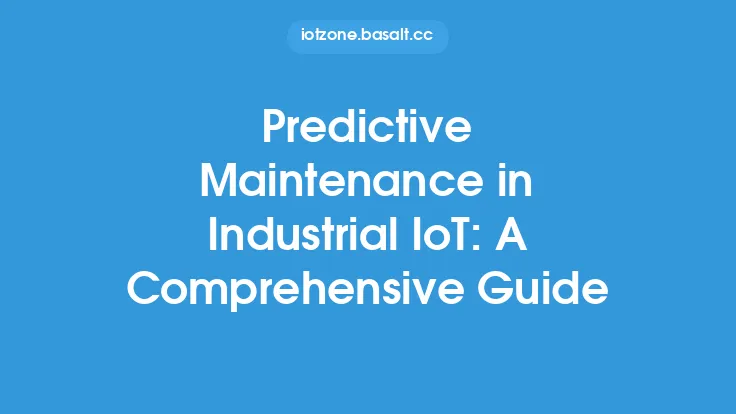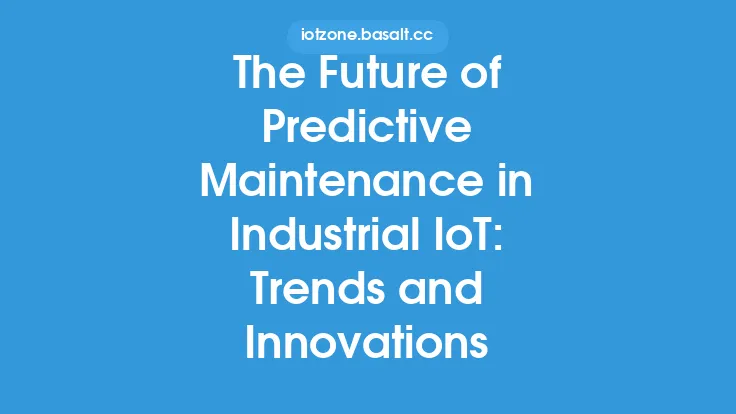The increasing complexity of industrial operations and the need for optimal equipment performance have led to a growing interest in data analytics for predictive maintenance. Predictive maintenance is a proactive approach to maintenance that uses data and analytics to predict when equipment is likely to fail or require maintenance, allowing for scheduled downtime and minimizing unplanned disruptions. In industrial settings, predictive maintenance can have a significant impact on reducing downtime, improving equipment reliability, and increasing overall efficiency.
Introduction to Predictive Maintenance
Predictive maintenance is a maintenance strategy that uses advanced analytics and machine learning algorithms to analyze data from equipment sensors, maintenance records, and other sources to predict when equipment is likely to fail or require maintenance. This approach allows maintenance teams to schedule downtime and perform maintenance tasks during planned outages, reducing the likelihood of unplanned disruptions and minimizing downtime. Predictive maintenance is particularly useful in industrial settings where equipment is complex, critical, and expensive to repair or replace.
Data Collection and Integration
The first step in implementing predictive maintenance is to collect and integrate data from various sources, including equipment sensors, maintenance records, and operational data. Equipment sensors can provide real-time data on temperature, vibration, pressure, and other parameters that can indicate equipment health. Maintenance records can provide information on past maintenance activities, including repairs, replacements, and inspections. Operational data can provide information on equipment usage, production rates, and other factors that can impact equipment performance. The data is typically collected and stored in a centralized database or data warehouse, where it can be accessed and analyzed by maintenance teams.
Data Analytics and Machine Learning
Once the data is collected and integrated, it can be analyzed using advanced analytics and machine learning algorithms to identify patterns and trends that can indicate equipment health. The analytics can include statistical models, such as regression analysis and time-series analysis, as well as machine learning algorithms, such as neural networks and decision trees. The algorithms can be trained on historical data to learn patterns and relationships between equipment parameters and maintenance outcomes. The trained models can then be applied to real-time data to predict when equipment is likely to fail or require maintenance.
Predictive Modeling Techniques
There are several predictive modeling techniques that can be used for predictive maintenance, including:
- Regression analysis: This technique uses statistical models to analyze the relationship between equipment parameters and maintenance outcomes.
- Time-series analysis: This technique uses statistical models to analyze trends and patterns in equipment data over time.
- Neural networks: This technique uses machine learning algorithms to analyze complex patterns and relationships in equipment data.
- Decision trees: This technique uses machine learning algorithms to analyze decision-making processes and identify patterns and relationships in equipment data.
- Clustering analysis: This technique uses machine learning algorithms to group similar equipment or maintenance activities together and identify patterns and trends.
Implementation and Deployment
Once the predictive models are developed and trained, they can be deployed in a production environment to provide real-time predictions and alerts to maintenance teams. The deployment can include integration with existing maintenance management systems, such as computerized maintenance management systems (CMMS) and enterprise asset management (EAM) systems. The integration can provide maintenance teams with real-time access to predictive maintenance data and alerts, allowing them to schedule downtime and perform maintenance tasks during planned outages.
Benefits and Challenges
The benefits of using data analytics for predictive maintenance in industrial settings include:
- Reduced downtime: Predictive maintenance can help reduce unplanned downtime by scheduling maintenance tasks during planned outages.
- Improved equipment reliability: Predictive maintenance can help improve equipment reliability by identifying potential failures and allowing maintenance teams to take proactive measures.
- Increased efficiency: Predictive maintenance can help increase efficiency by reducing the time and resources required for maintenance tasks.
However, there are also challenges associated with implementing predictive maintenance, including:
- Data quality: The quality of the data used for predictive maintenance can have a significant impact on the accuracy of the predictions.
- Model complexity: The complexity of the predictive models can make them difficult to interpret and deploy.
- Integration: The integration of predictive maintenance with existing maintenance management systems can be challenging.
Best Practices
To ensure the successful implementation of predictive maintenance, several best practices should be followed, including:
- Develop a clear strategy: Develop a clear strategy for predictive maintenance, including the goals, objectives, and metrics for success.
- Collect and integrate data: Collect and integrate data from various sources, including equipment sensors, maintenance records, and operational data.
- Use advanced analytics: Use advanced analytics and machine learning algorithms to analyze the data and develop predictive models.
- Deploy and monitor: Deploy the predictive models in a production environment and monitor the results to ensure accuracy and effectiveness.
- Continuously improve: Continuously improve the predictive models and maintenance processes to ensure optimal results.
Future Directions
The future of predictive maintenance in industrial settings is likely to involve the use of advanced technologies, such as artificial intelligence (AI), Internet of Things (IoT), and cloud computing. These technologies can provide real-time data and analytics, allowing for more accurate and effective predictive maintenance. Additionally, the use of digital twins and simulation models can provide a virtual representation of equipment and processes, allowing for more accurate and effective predictive maintenance. The future of predictive maintenance is also likely to involve the integration of predictive maintenance with other maintenance strategies, such as preventive maintenance and corrective maintenance, to provide a comprehensive maintenance program.
